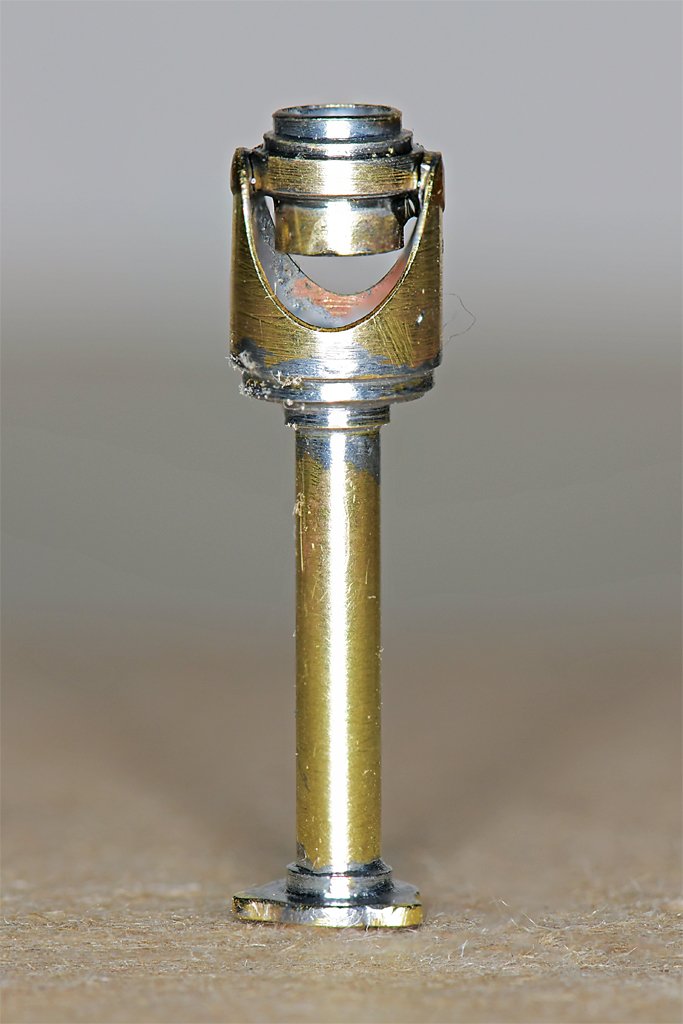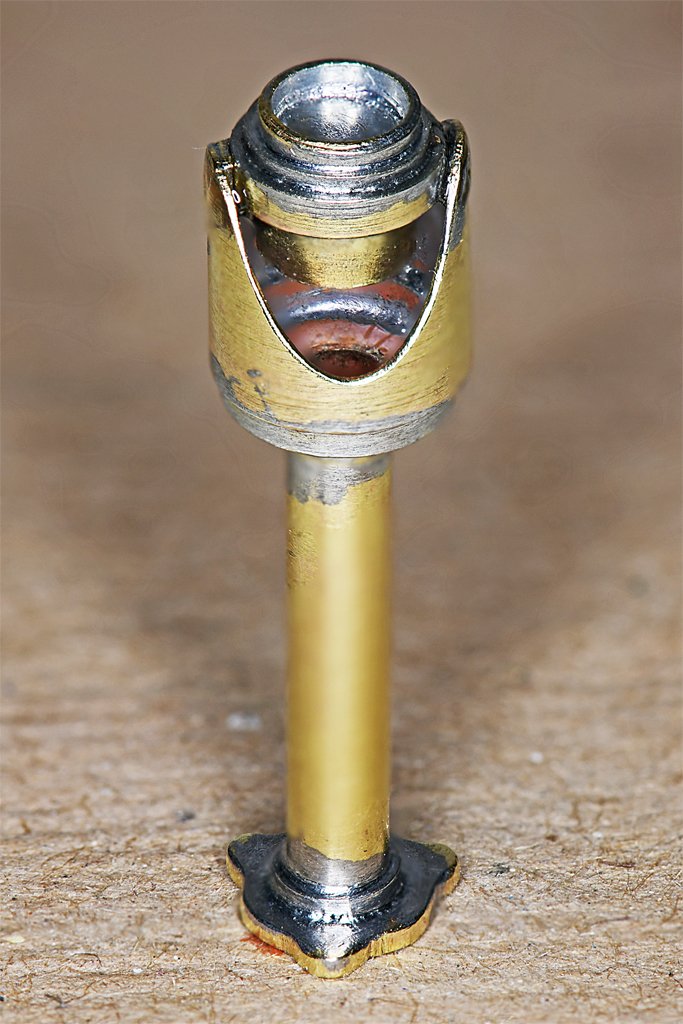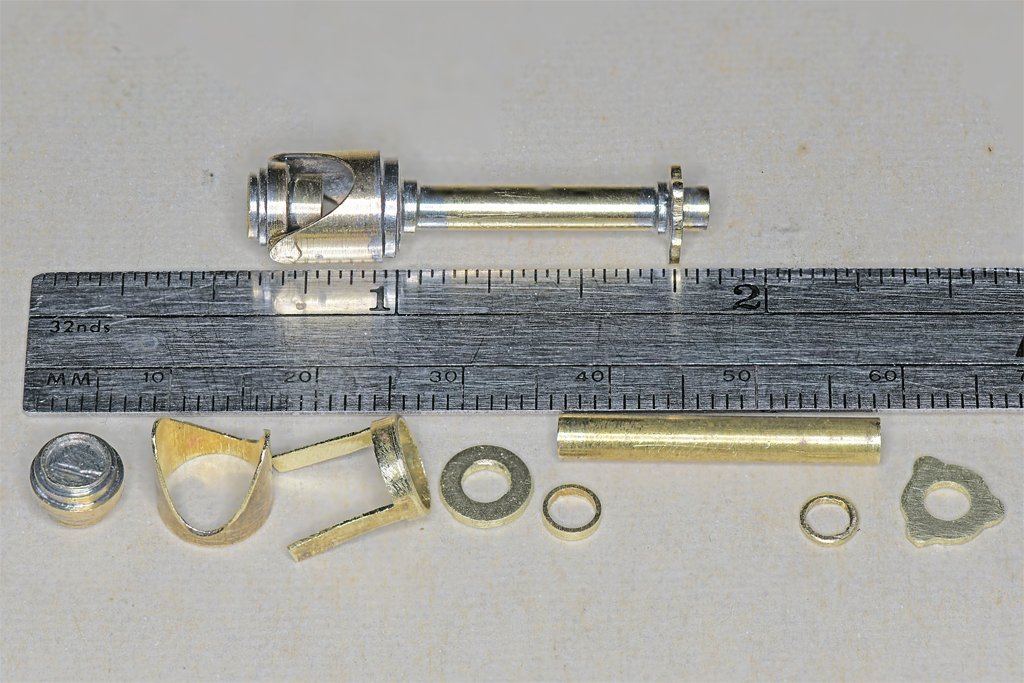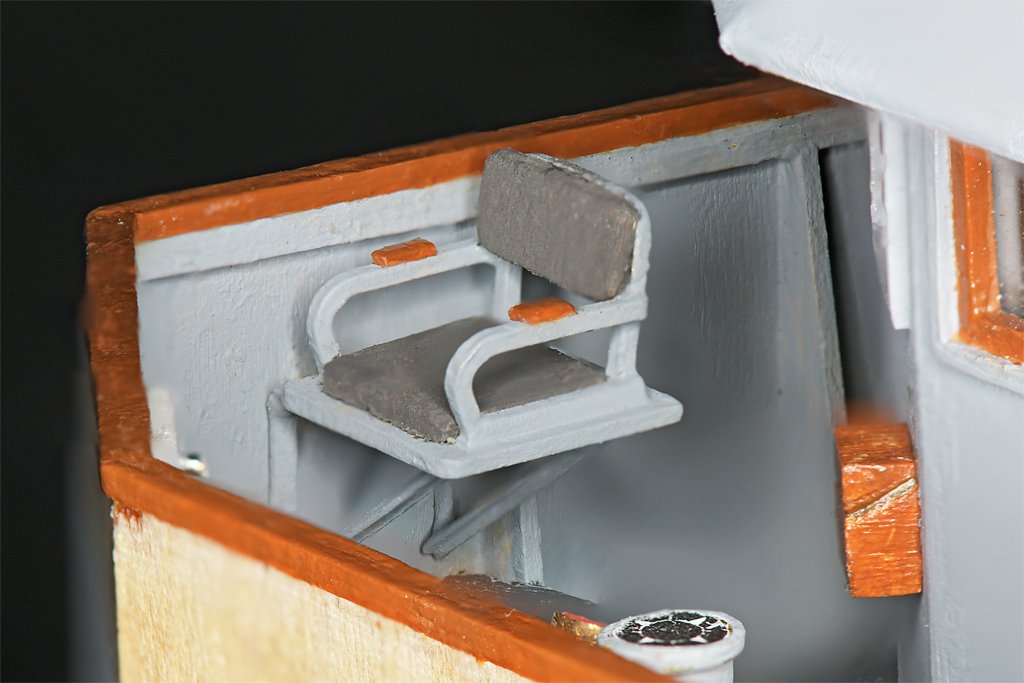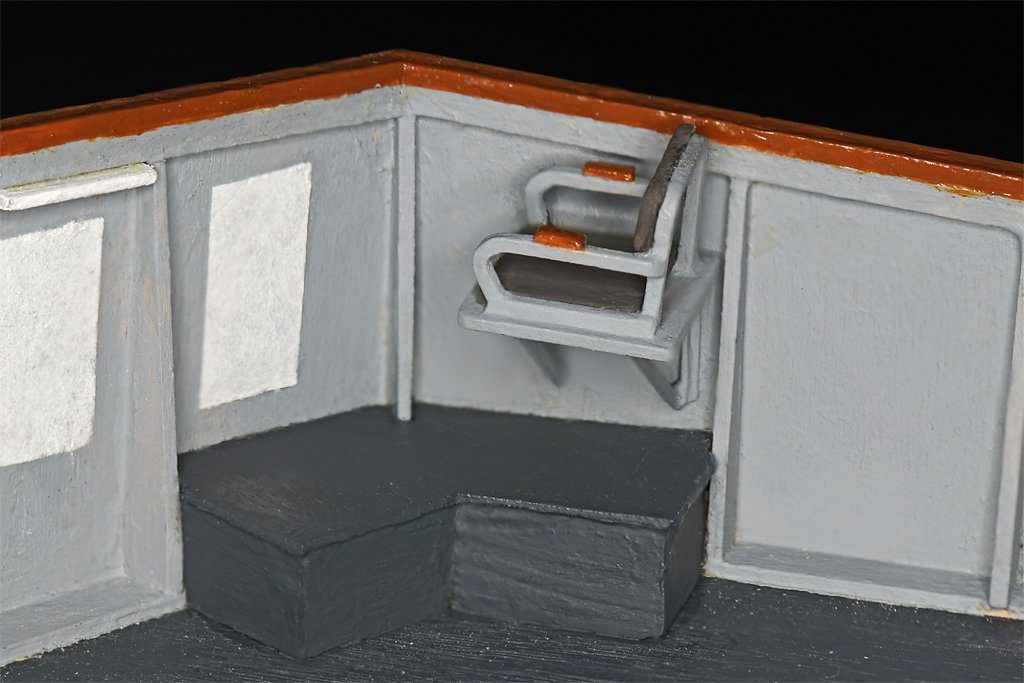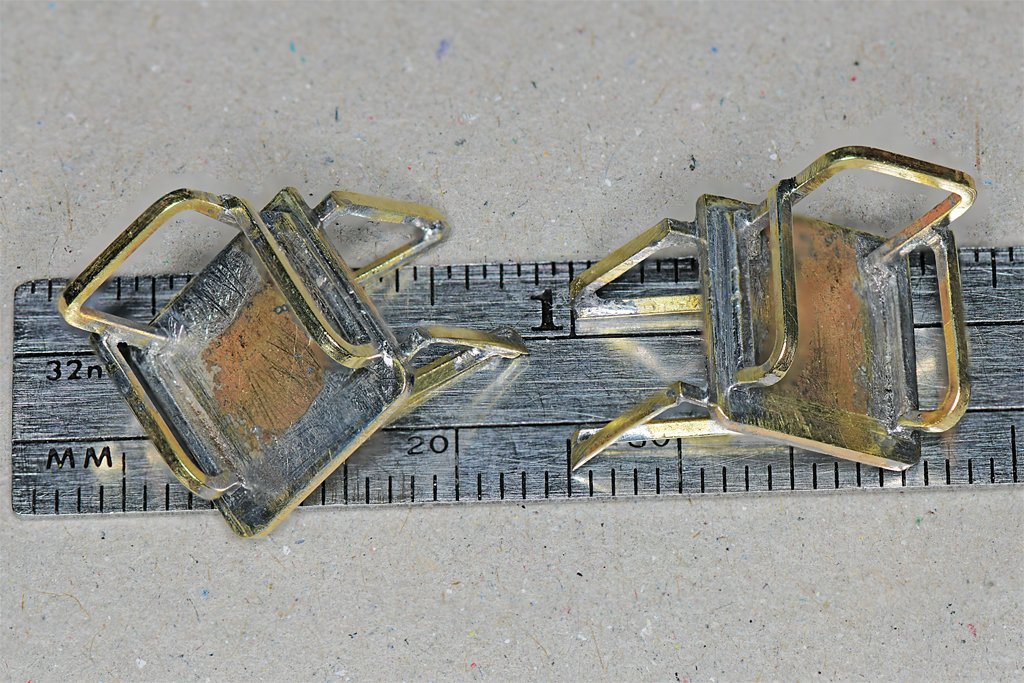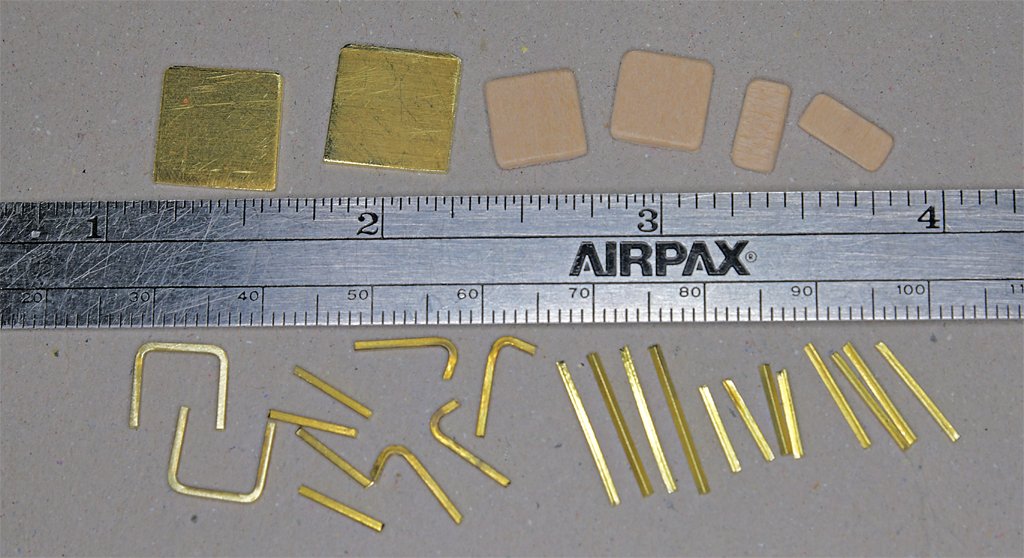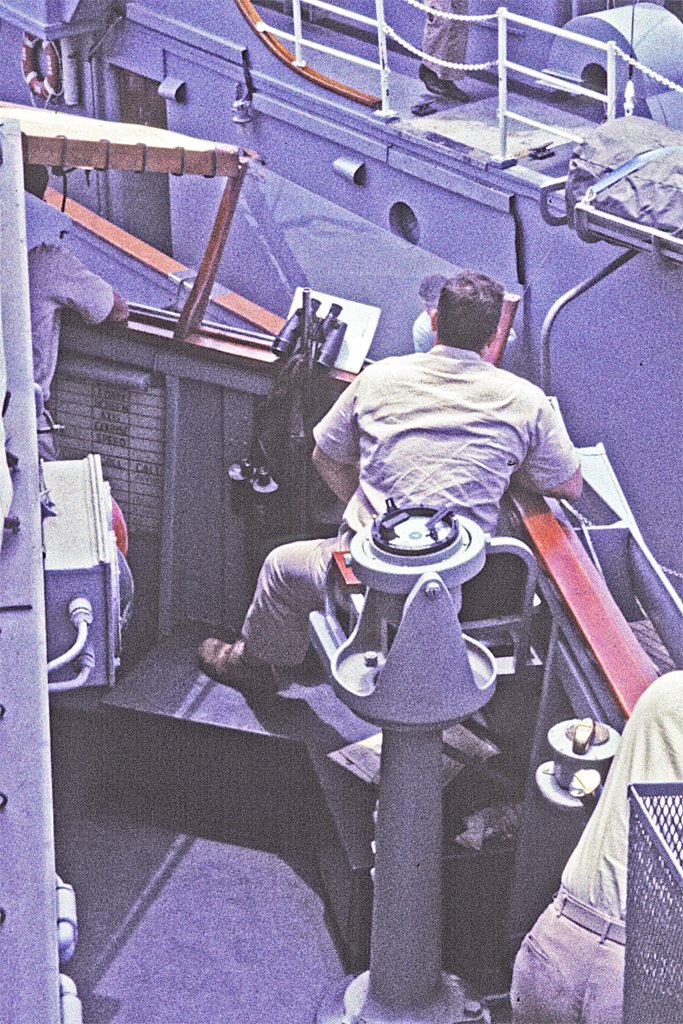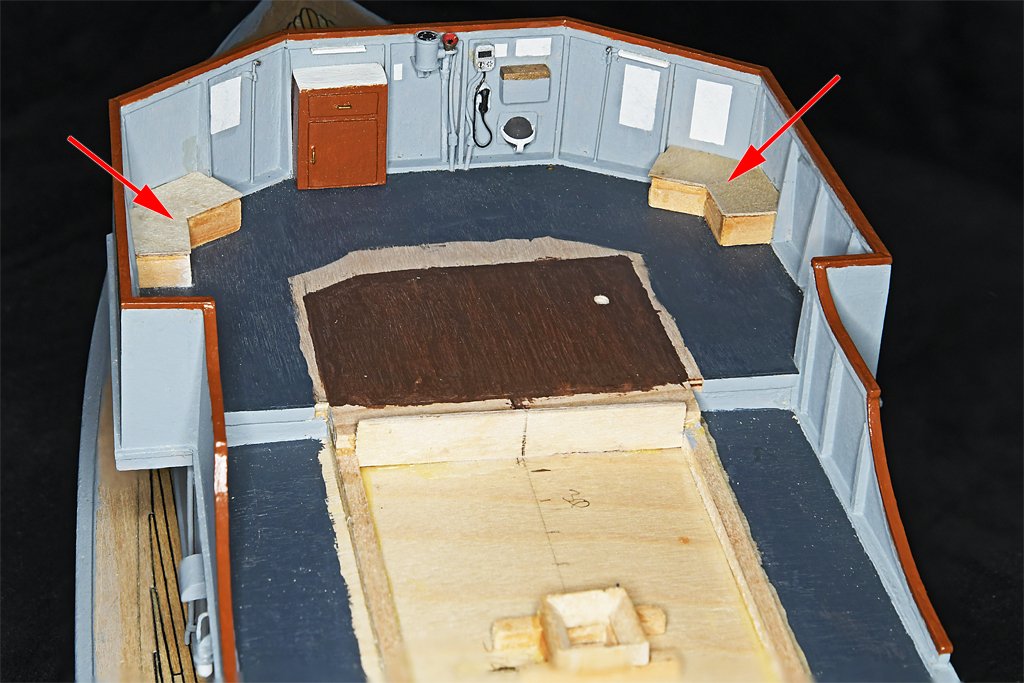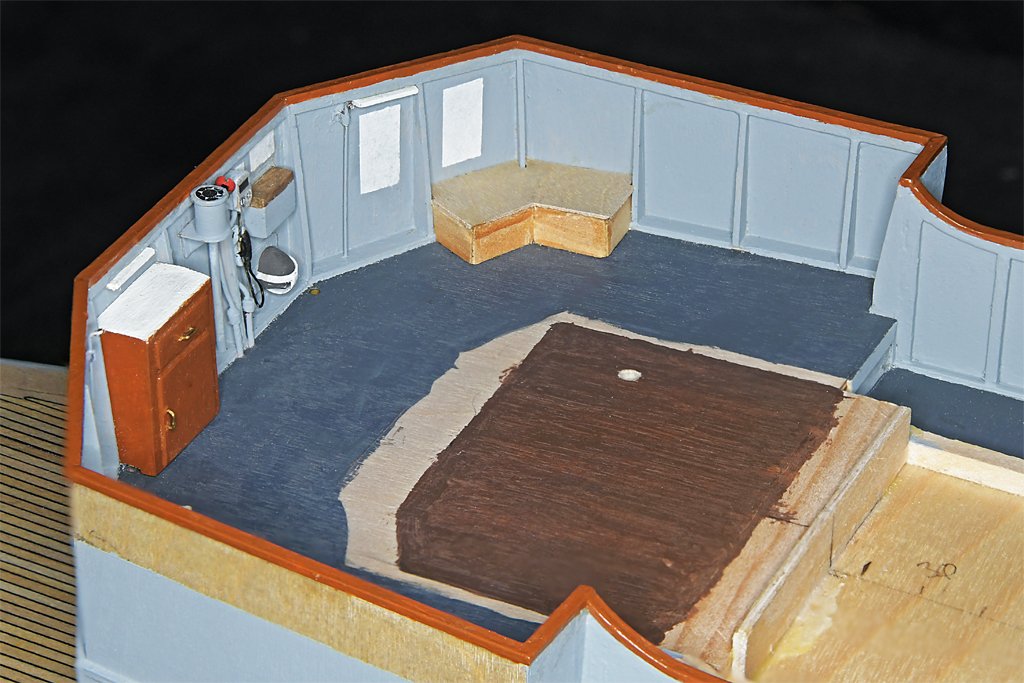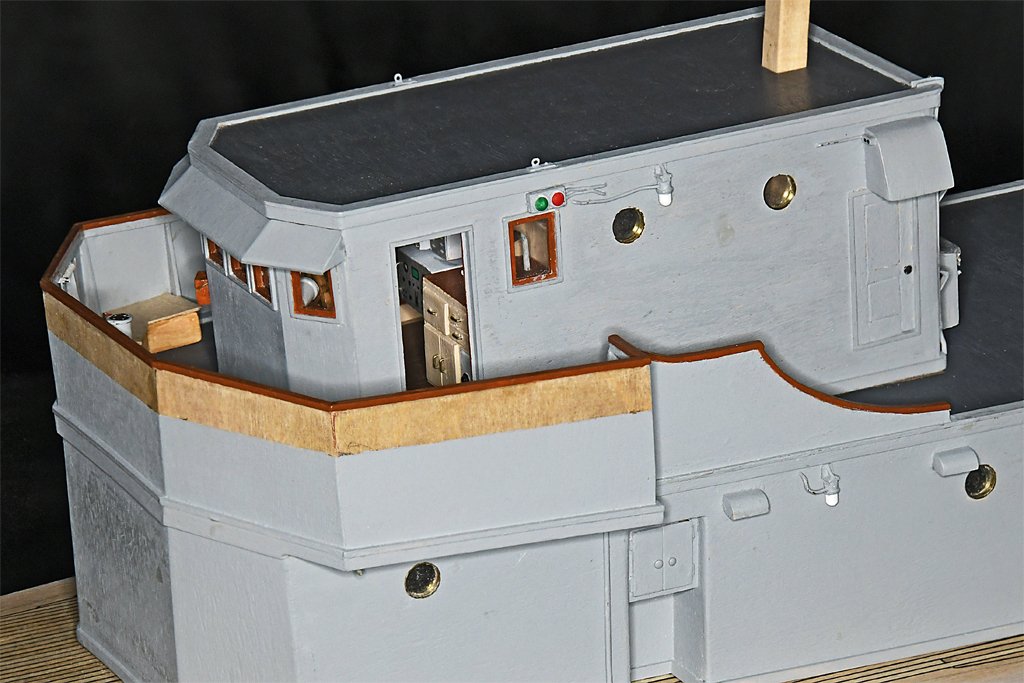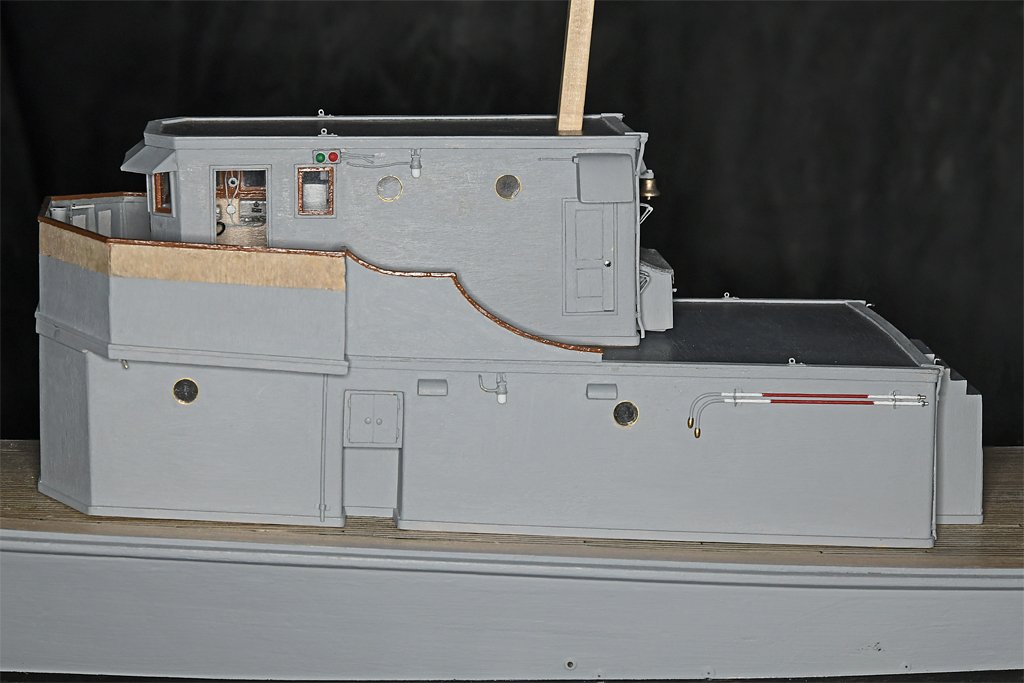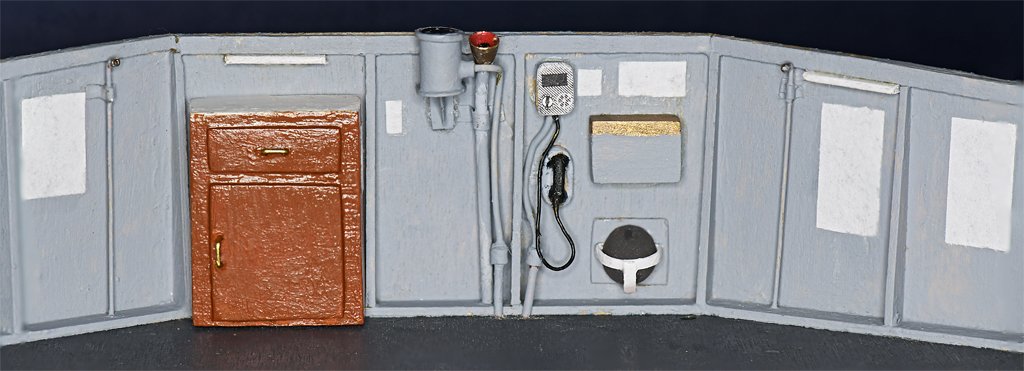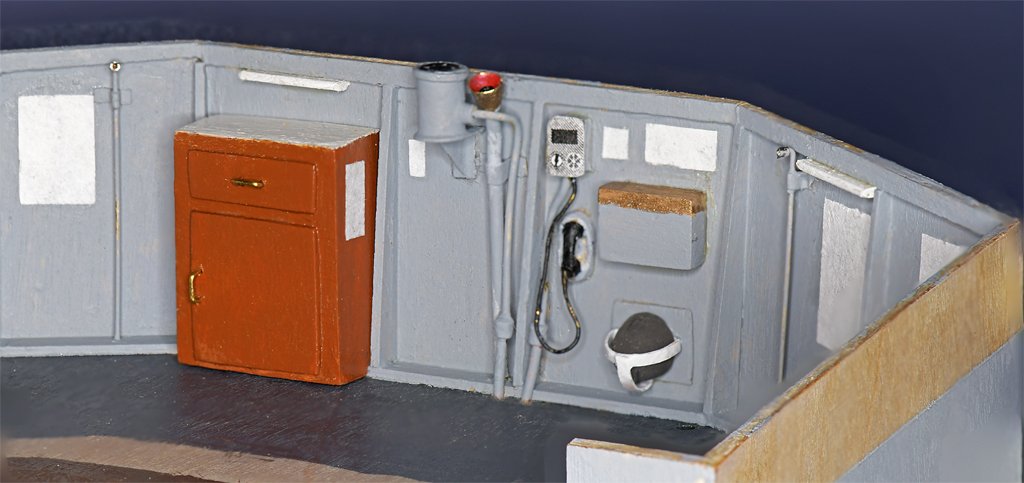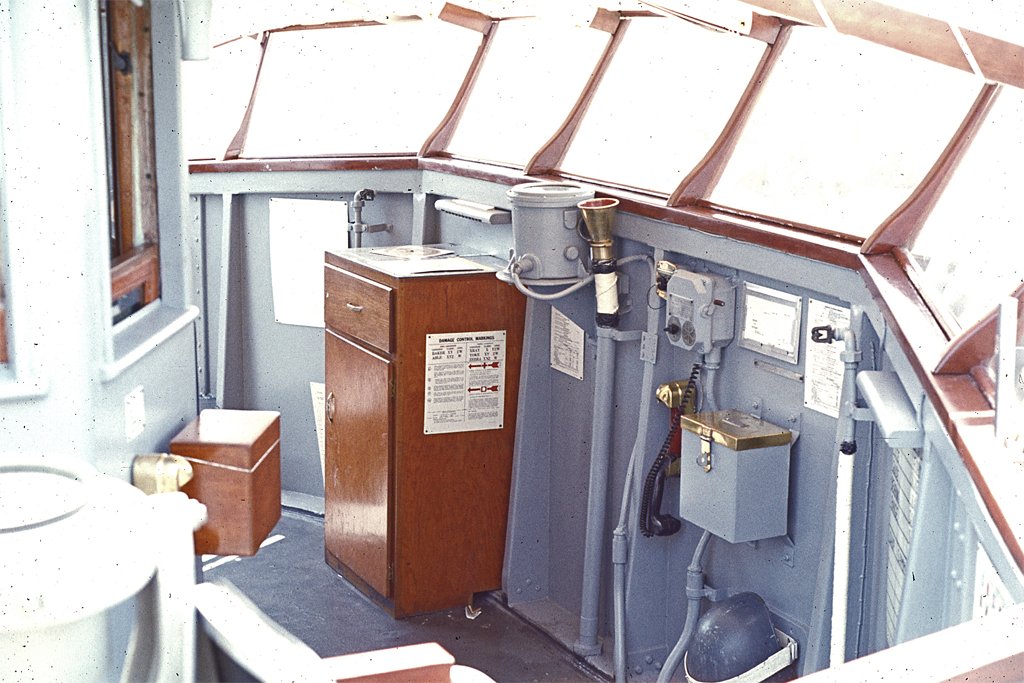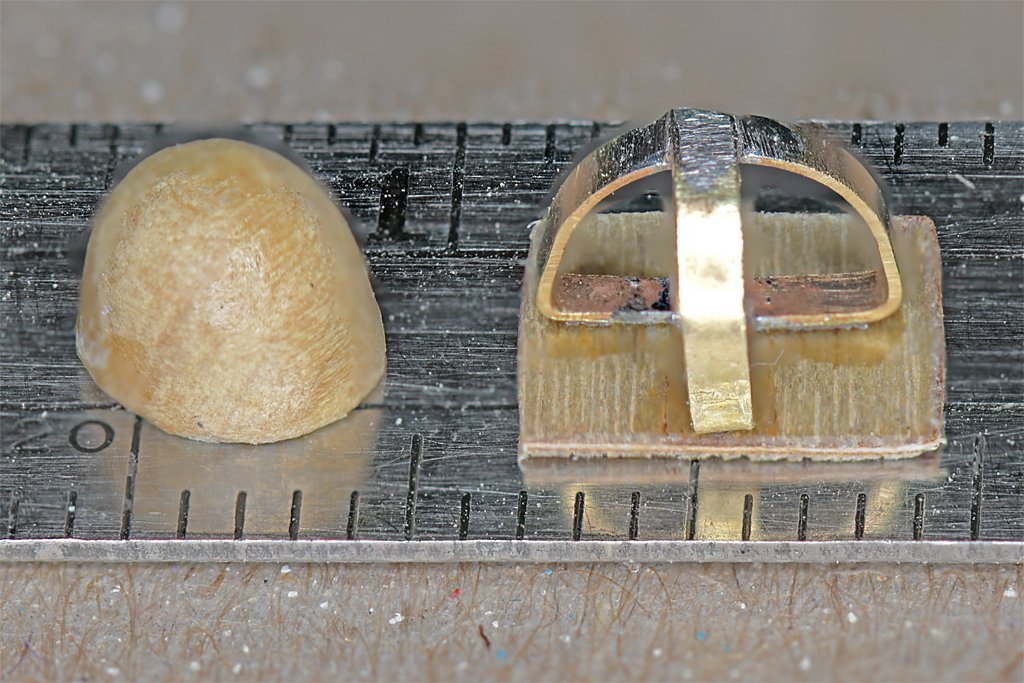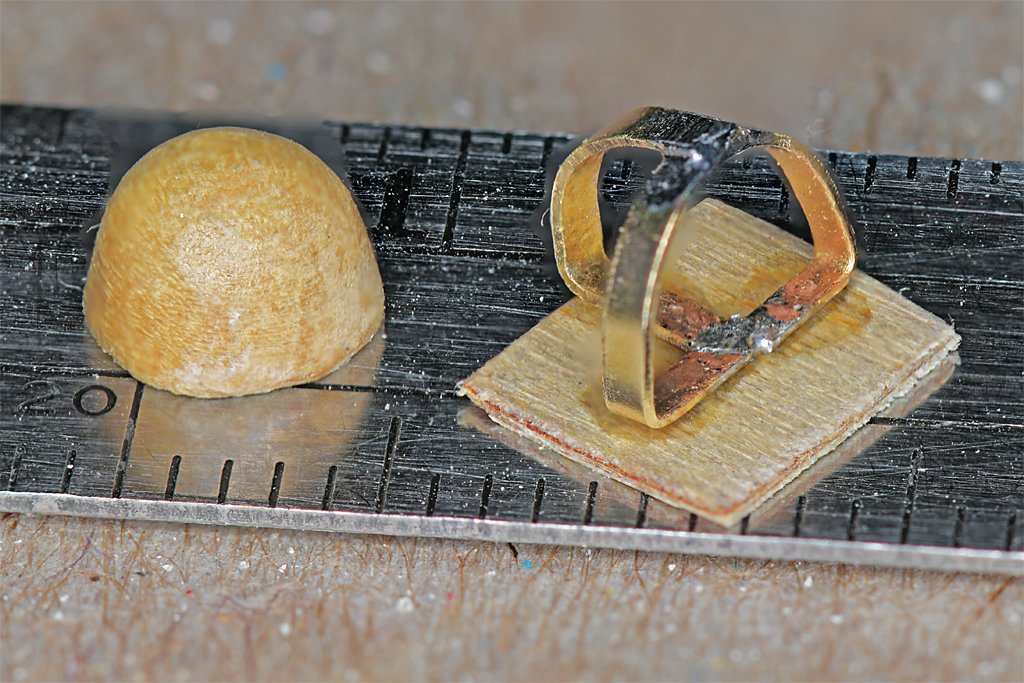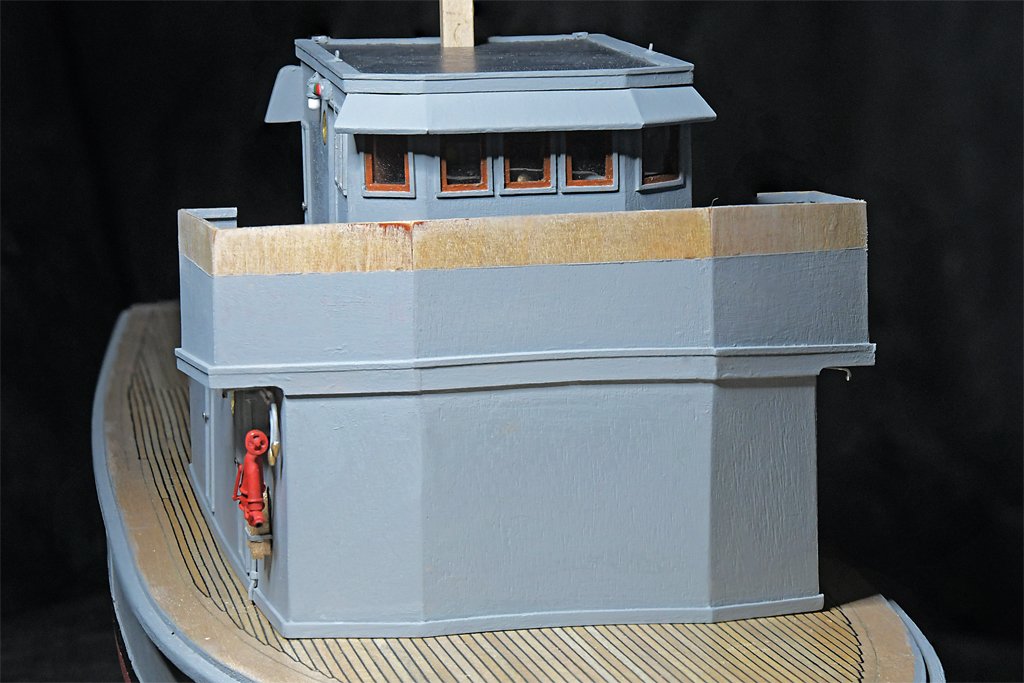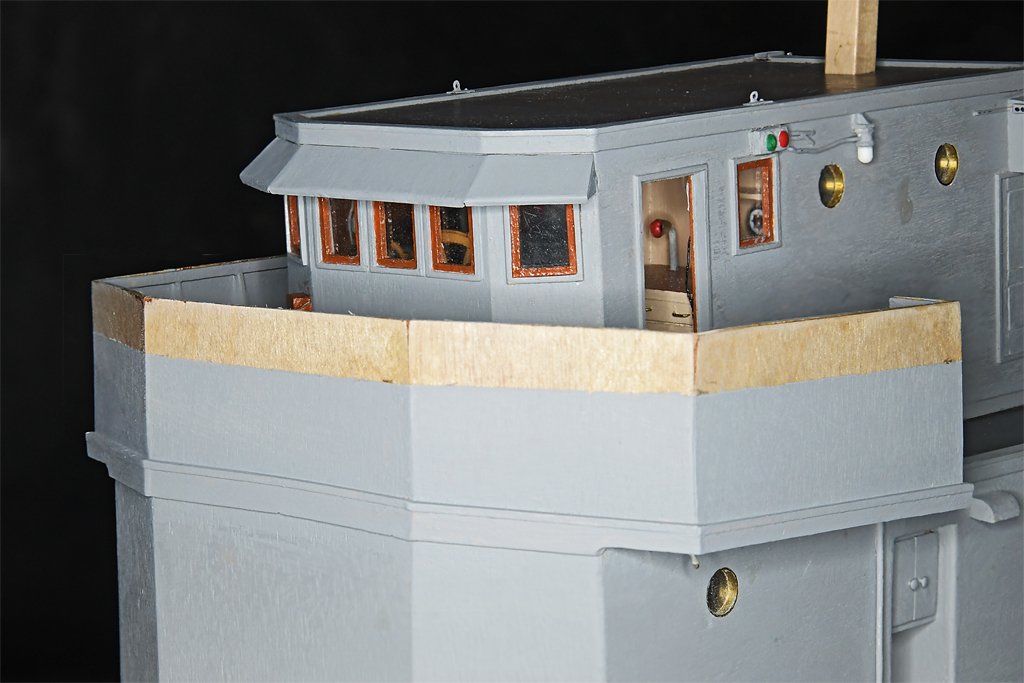-
Posts
2,383 -
Joined
-
Last visited
Content Type
Profiles
Forums
Gallery
Events
Everything posted by Dr PR
-
What are the fake gun ports made of? Epoxy is probably the all around best general purpose glue. It will glue just about anything to anything. I have used everything from very thin epoxy paint that soaks into wood grain to epoxy putty that is very good for molding parts, and it can be machined. The catch is the cure time. After mixing the two parts (be CERTAIN to follow the instructions) you have a limited time before the glue hardens. On the one hand some mixes set up in just 5 minutes, and some types take up to an hour to harden. So pick a type that gives you enough time to work with it to get things aligned, or to work with multiple assemblies, but not longer that you need. Once cured it is extremely difficult to remove. Rubbing alcohol will clean up excess before it cures. Super glues (CA or cyanoacrylate) are good for bonding metal to metal, and are commonly used for wood. Oddly enough, a web page describing many types of cyanoacrylate glues says it really isn't very good for wood! I have used it to glue metal to wood. The less you use the faster it cures. There are accelerators to speed up curing (although it is almost instant curing on metals and skin) and you can loosen it with acetone. CA gels are slower curing and give you a few seconds to position parts. But cyanoacrylates will fog most clear plastics and they leave a film on wood surfaces that interferes with staining. Use acetone to clean up residue.
-
Here are one assembled pelorus and parts for a second. The gyro repeater is already assembled from three pieces of concentric brass tubing from 0.186 to 0.250 inch (4.7 to 6.4 mm) diameter. The center piece is a 0.154 inch (3.9 mm) brass rod. The other parts are made from brass tubing from 0.125 inch to 0.311 inch (3.2 to 7.9 mm) diameter and brass plate 0.030 inch (0.76 mm) thick. The trick with any part like this with many pieces that are to be soldered together is to figure out a soldering sequence so that when adding another part an existing solder joint doesn't melt and let the thing fall apart. The gyro head was assembled separately, and then the stand was soldered together from the top down. It just needs a good brushing with a steel wire brush and a coat of paint. Grey, of course! Then I'll glue a compass rose into the top of the repeater.
- 406 replies
-
- minesweeper
- Cape
-
(and 1 more)
Tagged with:
-
John, I did screw up the first one. I soldered the upper parts on rotated 90 degrees from what they should be! Instead of facing forward it faced inboard!! It was a long day. Not much more to report. I am working on parts for the peloruses. But I had to post some pictures for Keith showing how two-legged chairs work!
- 406 replies
-
- minesweeper
- Cape
-
(and 1 more)
Tagged with:
-
Keith, With the Cape's $1200US per year operating budget we couldn't afford all four legs. But two legs worked OK in McHale's navy!
- 406 replies
-
- minesweeper
- Cape
-
(and 1 more)
Tagged with:
-
I agree that the crossjack yard is usually the spar on the mizzen mast that spreads the clews of a topsail. The spreader yard on a schooner's square sail mast is often called a crossjack because it is essentially the same as the mizzen's crossjack on a square rigger. I read somewhere that whether the yard that the course attaches to is called a spreader or a course yard depends upon how much tackle is permanently attached to the yard. If it is fully rigged for a square sail, like the fore/main course yards on square riggers, it is called a course yard. If the spar is rigged only to spread the topsail it is a spread yard, but some rigging could be attached temporarily to raise a course. And then there are the spreader yards that rest on and are tied to the bulwarks, with the course sheets running through blocks on the yard arms. But what about the Bentkick yard? It is actually called a boom, although it is essentially a yard and nothing like the boom on for-and-aft sails! It is a spreader yard attached to the clews of the course, but pulled down to the deck with a tackle attached to the center of the yard. And I would bet dollars to donuts that there were other variations on this theme that none of us have seen! **** Trevor, Underhill (Masting and Rigging) mentions that luff tackle and buntlines were often belayed on the same pin since they are both slack when the sail is set, and hauled on when the sail is reefed. Since the studding sails are set only when the other sails are fully deployed the lines could be belayed on almost any point carrying other lines for the associated square sail. However, I also suspect they might have been tied off to any handy point on the mast or tops. I keep watching for some explanation of how to belay stuns'l lines.
-
Congratulations! Stepping the mast is one of the milestone achievements in model making. It usually means the wood work on the hull is finished and you are about to become all tangled up in rigging and sails.
-
This is a kit of parts for two bridge wing chairs like you can see in the photo in post #389. I have one more photo that shows a chair from the front. From these I photoguestimated the dimensions. The bases were cut from 0.030 inch (0.76 mm) brass sheet. The arm rests and back pieces are 0.032 x 0.032 inch (0.8 x 0.8 mm) square brass rod. The seat support pieces are 0.032 x 0.032 inch brass "L". The square rod and "L" were made by Special Shapes Company (stock numbers S-1 and A-1). Unfortunately the company is no longer in business making these small parts and I have found no other company that makes parts this small. I bought these pieces about 15 years ago when a local hardware store closed. Here are the finished chair frames. The assembly was pretty tricky. It took about five hours to solder together the eleven brass pieces for the first chair. Working with such small pieces can be difficult - several parts popped out of tweezers and were never seen again. Just finding a collection of repositionable clamps to hold the parts in place while soldering is an adventure in itself. Getting enough heat sinks in place to prevent the heat from the current solder joint from flowing the short distance to another joint and unsoldering it is a challenge! Some of these joints were soldered up to five times to get everything in the correct positions. This is just good practice for the real challenges that will come when I start on all that complex minesweeping equipment on the stern. One thing I learned is that I need a lot more small heat sinks! The seats will mount to the bridge bulwarks with the triangular supports under the seat. They will be painted grey and wooden cushions and arm rests will be added.
- 406 replies
-
- minesweeper
- Cape
-
(and 1 more)
Tagged with:
-
Trevor, Wefalck told us in another post that Marquardt was German, and familiar with the northern European vessels and terminology. He later moved to Australia and wrote The Global Schooner - that could also account for some of his curious English terminology! I found his book very useful, but there were a lot of typos and other misinformation. You brought up a point in your post about stunsails. I have read that some of the rigging for stunsails was often left aloft. But I could find nothing about where the running ends were belayed. I examined the belaying plans for a couple of ships that used stunsails and found no mention of any of the stunsail rigging. Were the lines just belayed on the same pins as lines from the associated yards and sails? I know it was common to belay two lines on a single pin when the two lines had to be used together. Your comment about the work necessary for rigging stunsails reminded me of a comment I read somewhere that a sailor would look for evidence of stunsails on a ship (boom irons, etc.), and if it had them he wouldn't sign on.
-
Keith, Thanks! Glad to see your Cangarda build underway again. John, The round thing is a weatherproof rotary switch. Only the top plate is round. The bottom part is octagonal - a standard US Navy switch box. And it all rests on a "D" shaped support. My guess is that it is a light switch. Minesweepers had a virtual Christmas tree of lights on the mast to signal all sorts of things from anchored, to sweeping moored mines (port and/or starboard), magnetic mine sweeps, acoustic mine sweeps, formation station, and such.
- 406 replies
-
- minesweeper
- Cape
-
(and 1 more)
Tagged with:
-
Roel, You have a good eye for detail! There is a rotary switch just aft of the pelorus on the bulkhead. A voice pipe - with a cap instead of a megaphone horn - is just aft of the switch. This went to the voice pipe on the navigator's desk, for use when taking bearings to objects to locate the ship's position. We didn't have a voice pipe to the engine room. We could just open a door or two and shout - it was a small ship. Actually, we used sound powered phones and the Engine Order Telegraph. I have looked through the blueprints (at least those I have digitized) and can't find reference to he switch. I'm sure it is listed somewhere in the several hundred pages of blueprints, but I don't know what it was for. It might have been added after the ship was built. There were several changes from the initial construction, and some of these are apparent when comparing the Cape and the Cove. The blueprints show a 12 inch (30.5 cm) searchlight just aft of the voice tube, and there is one at that position on the Cove (and another on the port wing). But the Cape had both searchlights on the O2 level where they would be more effective. One of the things I am doing as I build the model is trying to verify that things actually were where the blueprints show them.
- 406 replies
-
- minesweeper
- Cape
-
(and 1 more)
Tagged with:
-
John, Are you referring to the triangular light gray thing outboard of the cap rail close to Fred's elbow? I have puzzled over that also. It appears to be the corner of the venturi. The forward section of the venturi is bent inward like something had hit it, bending the outboard edge upward. I don't recall this happening. Because we got underway infrequently I can't imagine when this happened. The ship had just had the venturis replaced when I first went aboard, so it wasn't old damage. It wasn't a side light. Unlike every other ship I have seen, the Cape's side lights were tiny, like bicycle tail lights! Or like the wing tip lights on a small airplane. They were on the outboard side of the bridge bulwarks a bit below the cap rail.
- 406 replies
-
- minesweeper
- Cape
-
(and 1 more)
Tagged with:
-
Bruce, I like the fuzzy chenille bagywinkles/baggywrinkles better than the tight yarn versions. The mast is coming along fine.
-
I have finished the bridge bulwark extensions along the O1 level. I added the mahogany cap rail - the blueprints say this piece actually was mahogany. The cap rail along the main deck bulwarks was supposed to be made of Douglas fir, although it was painted to look like mahogany on the ship. Next up were the bridge wing chairs and peloruses. I searched trough the pictures I had taken on the ship and found this photo. Here you see Captain Fred (SOPA - Senior Officer Present Afloat) taking the USS Cape MSI-2 going alongside the USS Cove MSI-1 on one of those occasions the rest of the mine squadron told us to "go away" (stay out of the way) until the end of the minesweeping practice. This was when we caught the shark (in an earlier post) and had a barbeque on the fantail. The picture shows a bit of the detail of the chair. It is enough to let me model something pretty accurate. It also shows the chair is anchored to the bulkhead, and is not resting on a pedestal. On the Oklahoma City the bridge chairs were larger, with a higher back, and swiveled on a pedestal. They were probably made of steel, and that wouldn't do on a minesweeper. The trick is determining the chair dimensions from just a photo like this. The blueprints do not show chairs on the bridge, but we had one on each side. But the blueprints to tell that the base of the pelorus was 17 inches (43.2 cm) diameter. It is close behind the chair so I can use that dimension to "photoguestimate" the width of the chair. The drawings also show the height of the pelorus and that will tell the approximate height of the chair parts. But this photo also revealed something else not in the blueprints, and it answers John's earlier question about the "tall bloke" on the bridge. The chair is positioned above a "V" shaped platform that follows the angle of the bulwarks. I have enhanced the brightness and contrast in the photo to reveal this platform. And it was this platform the tall bloke (Captain Buck) was standing on. From the photo I estimate the height of the platform was 1 foot (30.5 cm) and it was two feet wide (61 cm). It fits between the vertical bulwark supports, so I can determine the shape and dimensions pretty accurately. Here are a couple more pictures showing these platforms.
- 406 replies
-
- minesweeper
- Cape
-
(and 1 more)
Tagged with:
-
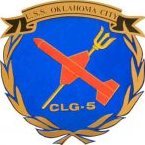
Basswood Strips
Dr PR replied to DGraley's topic in Building, Framing, Planking and plating a ships hull and deck
I bought some nice boxwood strips from Modeler's Sawmill in Rutherford New Jersey, USA. (modelerssawmill.com). Fast Tracks, Inc. (https://handlaidtrack.com)in Port Dover, Ontario, Canada sells Mt. Albert Scale Lumber wood strips of good quality. I ordered a lot of basswood strips from Sig Manufacturing. They were pretty good quality, but there was quite a bit of variation in the dimensions of the smaller strips. Other suppliers had better tolerances. Sig also has an excellent line of very thin plywood. Midwest Products (www.midwestproducts.com) has an excellent selection of small dimension basswood strips. Good tolerances. Bud Nosen Models (https://budnosenmodels.com/) has a good selection of wood strips and thin plywood. -
I looked at Michaels when I was making baggywinkles and they have dozens of types of knitting thread and yarns. I did find a heavy knitting yarn that looked like it would wind around a rope without becoming too compressed, but the roll was about 500 feet and cost 7-8 dollars. I only needed a couple inches. I used pipe cleaners I have had on the shelf for at least 30 years (I don't smoke so they are only occasionally used to clean out small tubes, etc. I don't know where you would find them today.
-
Here is a photo of the open bridge on the Cape. This was the normal conning station for driving the ship at sea. At the center is a gyro compass repeater and a voice tube to the helmsman in the pilot house. The windows on the bulwark and canvas awning overhead helped keep out the weather, but it could still be cold and wet in heavy seas. I have been working on the details on the bulwark. One of the details is the helmet stowage at the bottom right of the picture. The MSI blueprint set included drawings of these things. The helmet is a standard M1 steel helmet. I carved it out of boxwood. As I was doing this I was thinking it would be a lot easier to just find some cheap 1:48 or 1:50 plastic toy soldiers and chop off the head of one of them. The straps were actually made of woven cloth or canvas - I used 0.008 inch (0.2 mm) brass strips about 1/32 inch (0.8 mm) wide. If you look closely you will see that I didn't achieve perfect representation of what is shown in the photo. The voice tube moved to the left slightly as the glue hardened and I couldn't wrap the cable from the gyro repeater behind it as shown in the photo. And after I had glued the sound powered phone station in place I noticed that it should be a bit more to the right so a separate phone connection box could fit between it and the bulwark stiffener. This completes the inner bulwark detail. Now I need to work on the extensions of the bulwarks along the sides of the O1 level, and complete the details on the front of the deck house.
- 406 replies
-
- minesweeper
- Cape
-
(and 1 more)
Tagged with:
-
The forestay is twisting because it has strain on it. The scale ropes we use are made with a single direction turn - a spiral. When it is stretched the spiral partially unwinds, causing the free end of the rope to spin. Real heavy ropes were made with left hand right hand turn layers to counter this tendency to twist. You can reduce the twist by slacking the line a bit. You just need enough tension to pull the line straight. It shouldn't be trying to bend the mast. For the deadeyes and sheer poles I would loosely rig all of the deadeye lanyards first - don't tie off the end yet. This will hold the ends of the shrouds and deadeyes in place while you attach the sheer poles. Then finish tying off he lanyards.
-

Bullseyes & Lanyard - some help please.
Dr PR replied to Capt. Kelso's topic in Masting, rigging and sails
You need a copy of Darcy Lever's The Young Sea Officer's Sheet Anchor 1808 (Algrove Publishing Limited, Ottowa, Ontario, 2000). This was written for young sea officers to tell them how to rig and sail ships. It is a fascinating read and invaluable reference. On page 14 he describes bull's eyes as "a wooden thimble, with a hole in the enter, and a groove in the circumference." On page 24 he says three or more turns are taken through the eye and "stopped to the standing part or hitched around the stay." Of course, he tells in detail how to "stop" or "hitch" the line on pages 8 and 9. How do you raise a mast when you don't have a crane to lift it? Lever explains how! It is the most useful reference for sailing ship rigging that I have found! -
For the sails on my topsail schooner model I followed Tom Lauria's YouTube procedure in Making Sails for Ship Models From Silkspan. He shows a technique for folding silkspan sail material for furling the sail on the boom.
-
How about posting a picture of what you are building so we know whether it is a coal barge or a battleship?
- 21 replies
-
Steve and John, thanks. The fellow sitting on the bulwark with his back to us was Captain Fred Buck, LT USNR. I think he had his feet on the bridge wing chair. He wasn't as tall as the photo suggests. He signed on for another three year hitch to get command of the Cape. Then they decommissioned it. I don't know what he did after that. However, the Navy had excess junior officers in 1969 and were offering early outs for any who had at least six months active duty and wanted to go back to civilian life. I think all the other officers on the MSIs were taking early outs - I didn't have six months service at the time. Besides, I wanted to do the full three years to get the GI Bill benefits (free college tuition and low mortgage rates). Besides, I had joined the Navy to see the world, and Los Angeles/Long Beach wasn't all I had hoped to see!
- 406 replies
-
- minesweeper
- Cape
-
(and 1 more)
Tagged with:
-
Thanks again for the comments and likes. More bridge bulwark work. As I was studying photos and blueprints of the Cape and Cove I noticed something that looked peculiar. The trim at the bottom of the bridge bulwark sides is the same width as the trim along the top sides of the deckhouses (red lines). This trim extends across the front of the deckhouse, but it is wider near the center than on the outboard wings. OK, I guessed this was just the designers whim. But I also realized this trim served the purpose of covering the edges of the 3/4 inch (19 mm) bridge deck, just as it covers the edges of the decks on the deckhouses. For the model this is very convenient, because it does the same thing - cover the edges of the 1/16 inch (1.6 mm) plywood I used for the decks. The edges of the decks rest on the deckhouse sides, and it would be difficult to seal and finish the plywood edges as smooth as the deckhouse sides. So the trim hides the model's deck edges, just as it did on the real ships. But why use wider trim at the front? The blueprints say to be sure the trim on the front of the deckhouse covers the edges of the bridge deck. This is where the designer's desire to make a pretty ship - with the bulwark top and bottom following the sheer and camber of the main deck - ran into problems because the bridge deck was horizontal with no camber or sheer. And that was an even greater problem on the model with the thick plywood deck! The green lines in the photo show the outlines of the bridge deck. The red lines show the trim. The trim starts out below the deck edges on the outboard wings and curves up over the deck edge at the center. The normal trim width used on the sides was not tall enough to cover the deck edge at the center because of the camber. So they just made the trim wider across the front. I have painted most of the bulwarks inside and out However I have left a strip at the outside top bare for now. The bridge venturis will mount there (you can see them in the photo of the ship above). They are a bit complicated and will be a project in themselves. A cap rail will fit on top of the bulwarks, and that complicated set of windows and awning supports will fit onto that. That will be delicate work and I will probably save that for the last work on the deckhouses. I have given up on using real mahogany for the cap rail for the bridge and bow bulwarks. I will use boxwood or basswood and paint them with the same "mahogany" paint I used for the bridge windows.
- 406 replies
-
- minesweeper
- Cape
-
(and 1 more)
Tagged with:
About us
Modelshipworld - Advancing Ship Modeling through Research
SSL Secured
Your security is important for us so this Website is SSL-Secured
NRG Mailing Address
Nautical Research Guild
237 South Lincoln Street
Westmont IL, 60559-1917
Model Ship World ® and the MSW logo are Registered Trademarks, and belong to the Nautical Research Guild (United States Patent and Trademark Office: No. 6,929,264 & No. 6,929,274, registered Dec. 20, 2022)
Helpful Links
About the NRG
If you enjoy building ship models that are historically accurate as well as beautiful, then The Nautical Research Guild (NRG) is just right for you.
The Guild is a non-profit educational organization whose mission is to “Advance Ship Modeling Through Research”. We provide support to our members in their efforts to raise the quality of their model ships.
The Nautical Research Guild has published our world-renowned quarterly magazine, The Nautical Research Journal, since 1955. The pages of the Journal are full of articles by accomplished ship modelers who show you how they create those exquisite details on their models, and by maritime historians who show you the correct details to build. The Journal is available in both print and digital editions. Go to the NRG web site (www.thenrg.org) to download a complimentary digital copy of the Journal. The NRG also publishes plan sets, books and compilations of back issues of the Journal and the former Ships in Scale and Model Ship Builder magazines.


